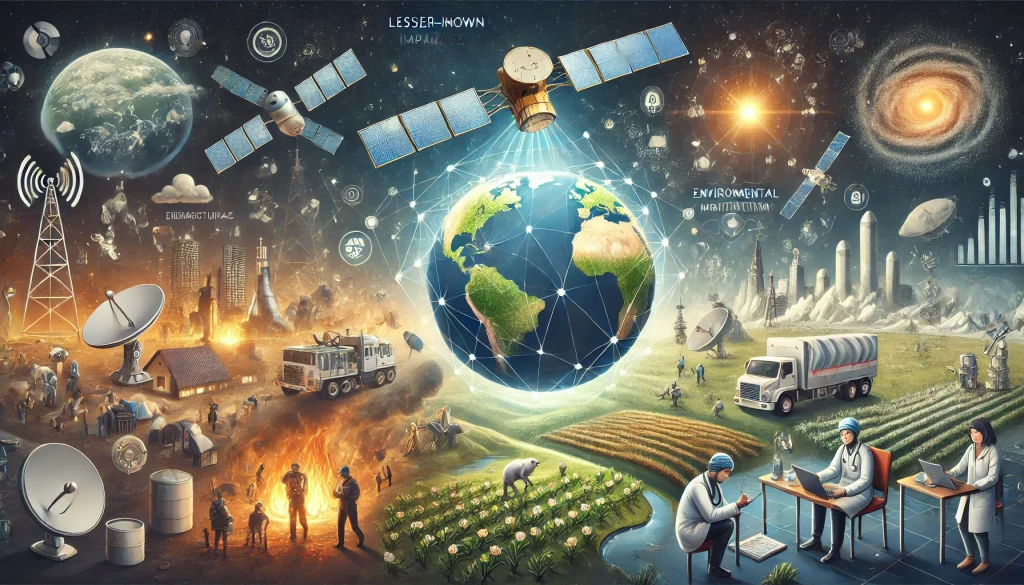
Satellite communication has been a cornerstone of modern technology, providing the backbone for global communication networks, GPS navigation, and remote sensing. While much has been discussed about its direct applications, there are several lesser-known impacts and innovative uses of satellite communication that often go unnoticed. In this article, we will delve into these uncommon aspects, revealing how satellite technology is influencing various fields in unique ways.
1. Environmental Monitoring and Conservation
One of the most critical yet underappreciated uses of satellite communication is in environmental monitoring and conservation. Satellites equipped with remote sensing technology can track deforestation, monitor wildlife populations, and observe changes in land use. For instance, conservationists use satellite data to monitor endangered species’ habitats, track illegal poaching activities, and even predict natural disasters like forest fires and floods. This real-time data is invaluable in forming effective conservation strategies and policies.
2. Precision Agriculture
Agriculture has seen a technological revolution with the advent of satellite communication. Precision agriculture relies heavily on satellite data to optimize farming practices. By using satellite imagery and GPS, farmers can monitor crop health, soil conditions, and weather patterns. This information allows for more efficient use of resources like water and fertilizers, leading to increased yields and reduced environmental impact. Additionally, satellites help in mapping and managing large-scale agricultural fields, making farming more sustainable and productive.
3. Disaster Response and Management
In times of natural disasters, satellite communication becomes a lifeline. Satellites provide critical data that helps in assessing damage, coordinating rescue operations, and delivering aid to affected areas. For instance, after an earthquake, satellites can quickly assess the extent of the damage, helping authorities prioritize response efforts. Moreover, satellite-based communication systems are often the only reliable means of communication when terrestrial networks are down, ensuring continuous coordination and information flow during emergencies.
4. Global Health Initiatives
Satellite communication plays a pivotal role in global health initiatives, especially in remote and underserved regions. Telemedicine, enabled by satellite connectivity, allows healthcare professionals to consult with patients in remote areas, providing access to medical expertise that would otherwise be unavailable. Satellites also support the distribution of medical supplies and the monitoring of disease outbreaks, ensuring timely intervention and control. This capability is crucial in managing pandemics and other widespread health crises.
5. Cultural Preservation
An unexpected yet fascinating application of satellite communication is in the preservation of cultural heritage. Satellites can monitor and document historical sites and artifacts, especially those at risk due to environmental factors or human activities. By providing high-resolution images and data, satellites help archaeologists and historians preserve and protect our cultural heritage. This technology is also used to track changes over time, offering insights into the impact of climate change and urbanization on historical sites.
6. Scientific Research and Space Exploration
Satellite communication is indispensable in scientific research and space exploration. It enables the transmission of vast amounts of data from space missions back to Earth, facilitating the study of our universe. Satellites are used to observe distant galaxies, monitor space weather, and conduct experiments that would be impossible on Earth. This data not only expands our understanding of the cosmos but also leads to technological advancements that benefit other fields.
7. Enhancing Global Education
Education is another field where satellite communication has made a significant impact. Through satellite-based internet services, educational content can be delivered to remote and underserved areas, bridging the digital divide. Distance learning programs rely on satellite communication to provide students with access to online courses, virtual classrooms, and educational resources. This democratization of education ensures that knowledge and learning opportunities are available to everyone, regardless of their geographical location.
